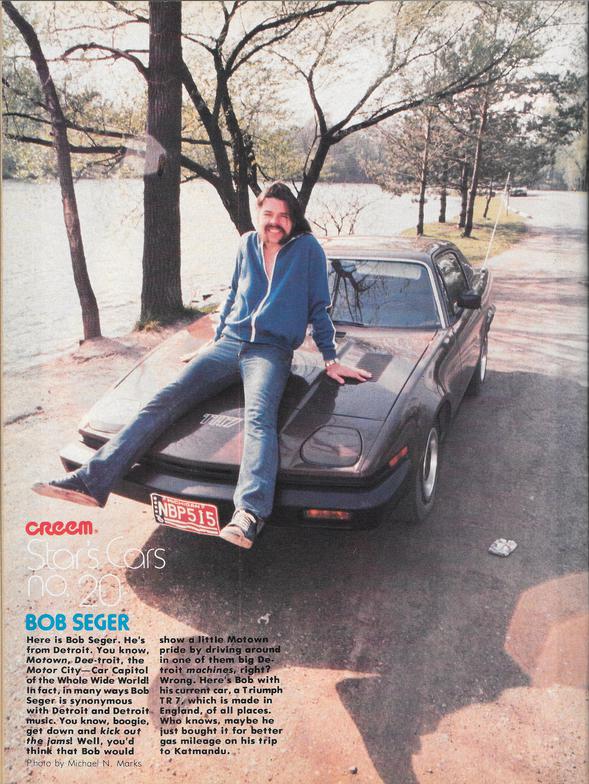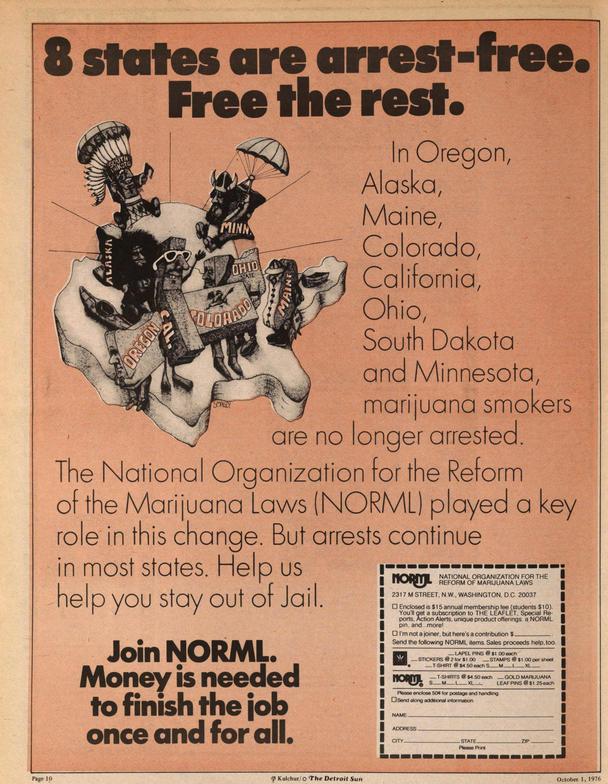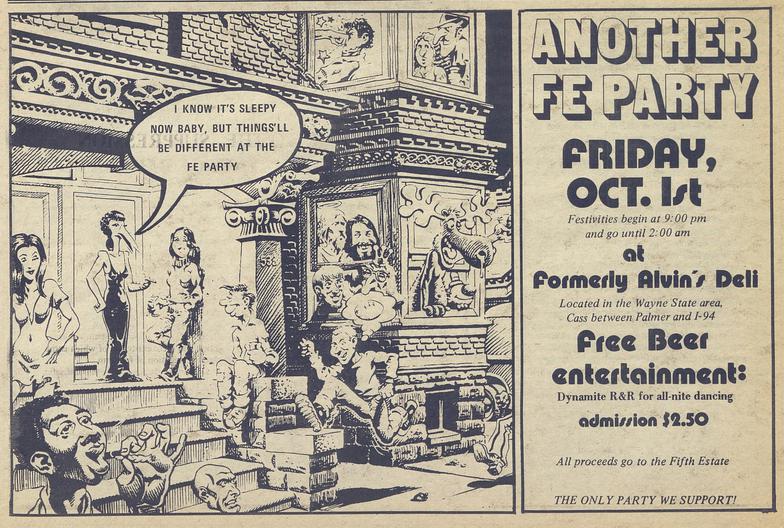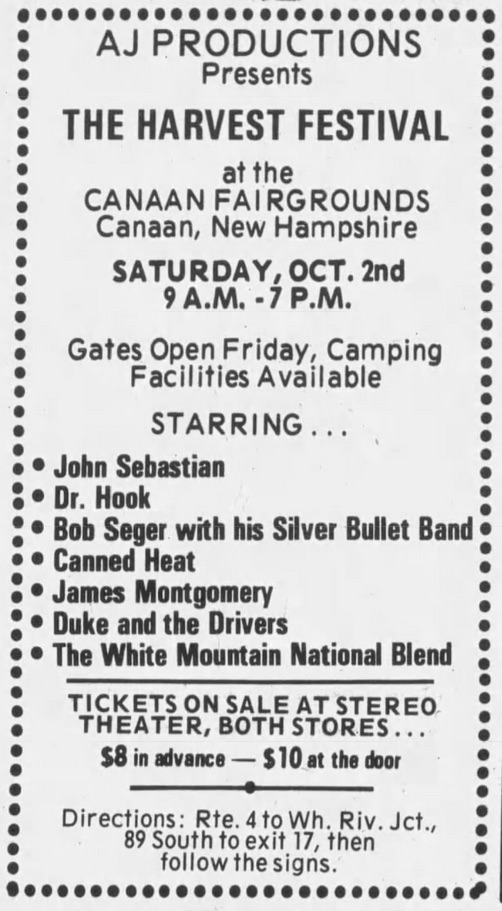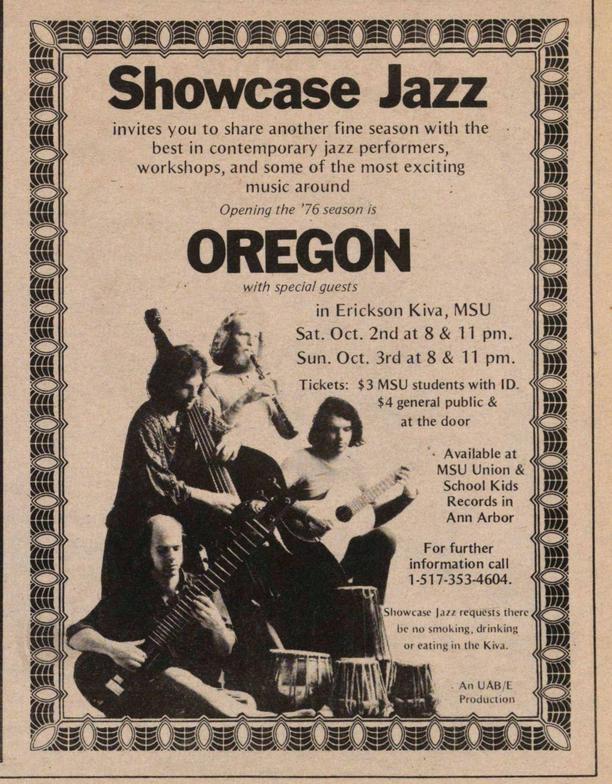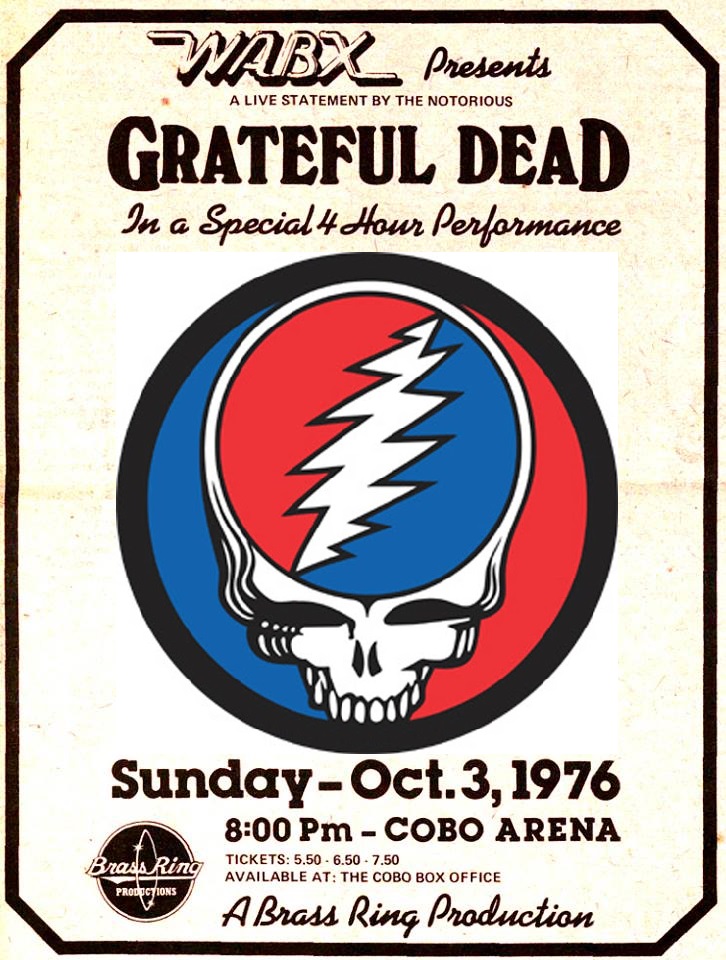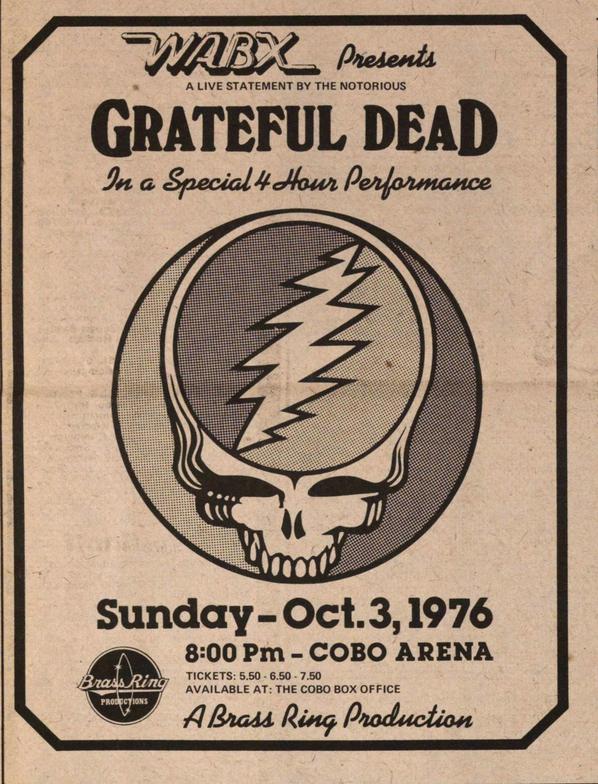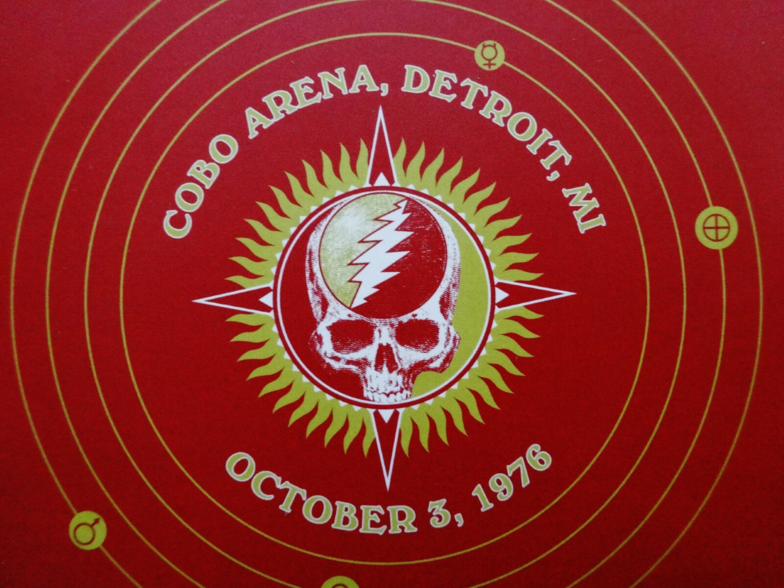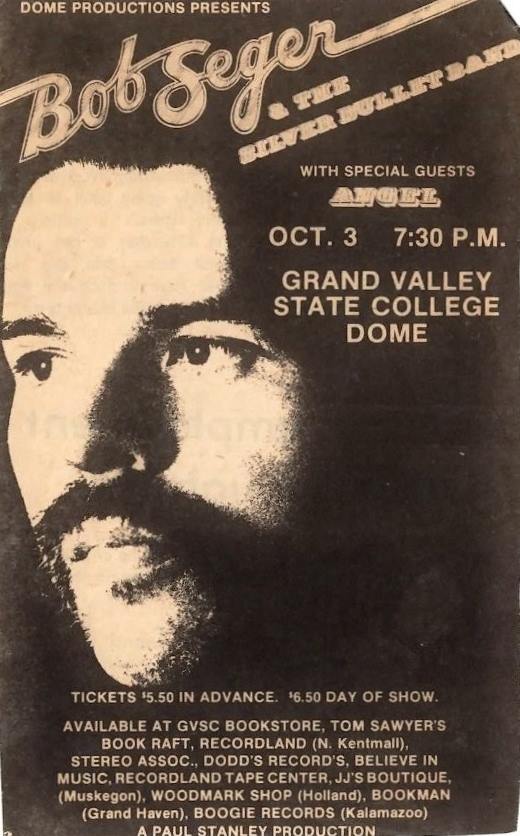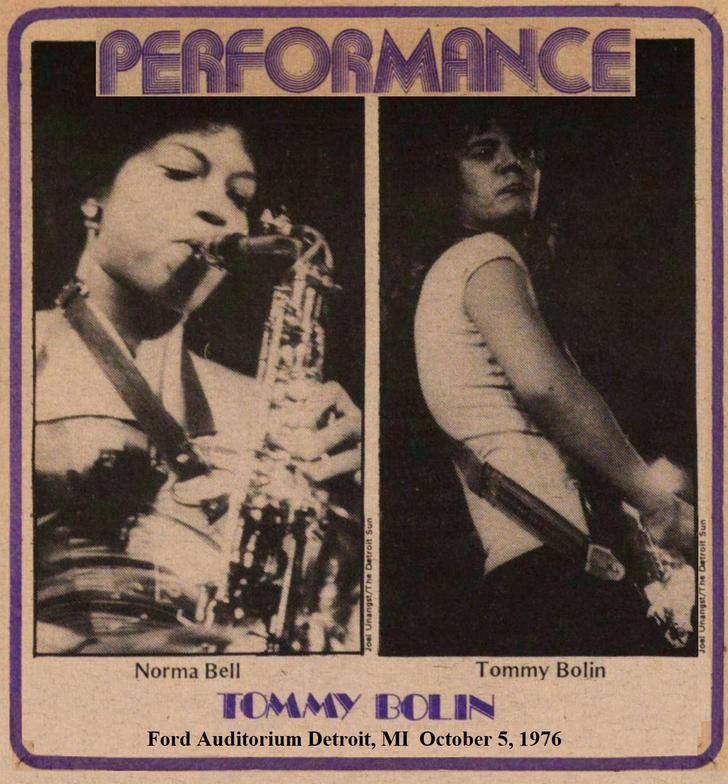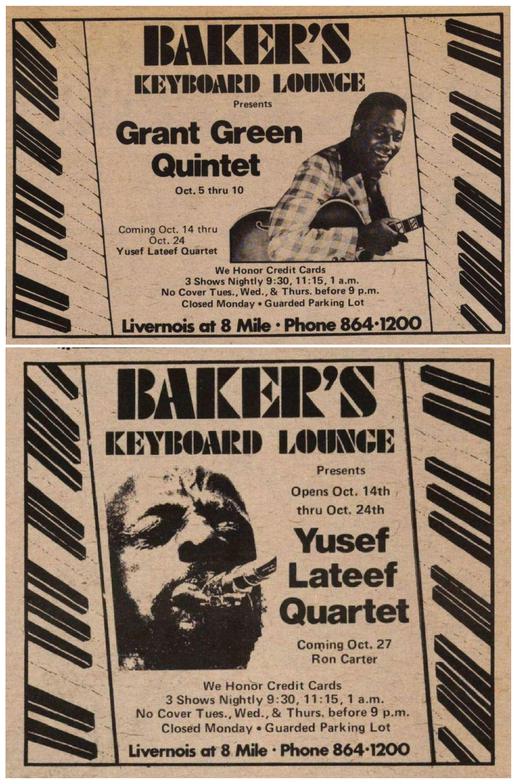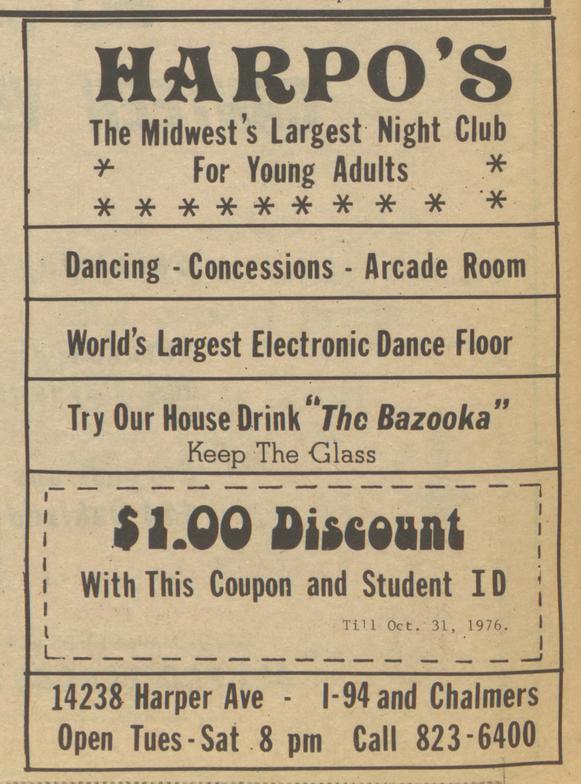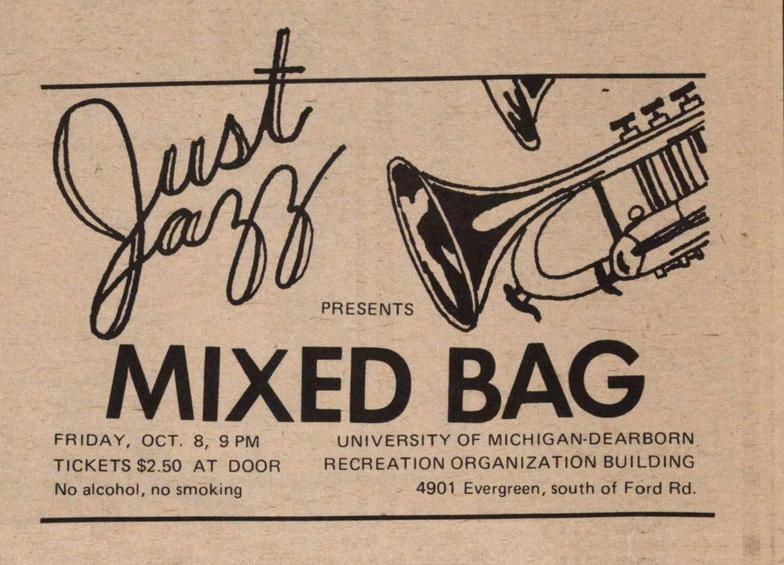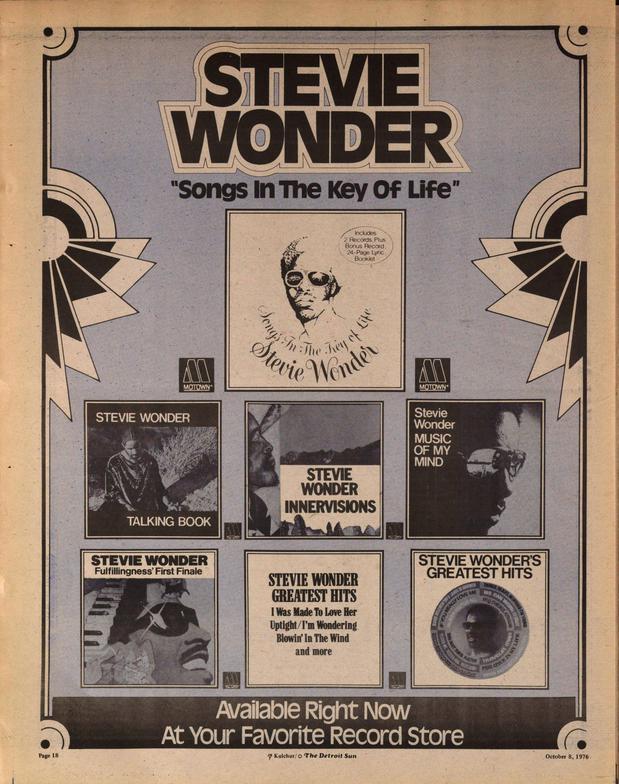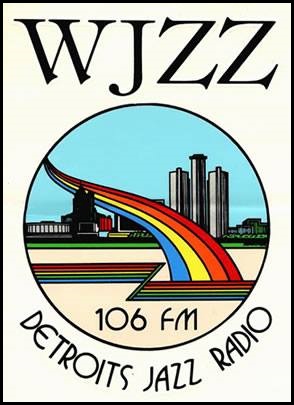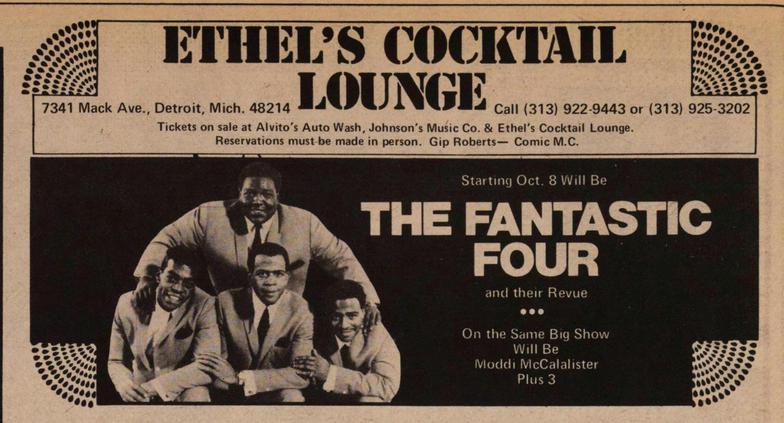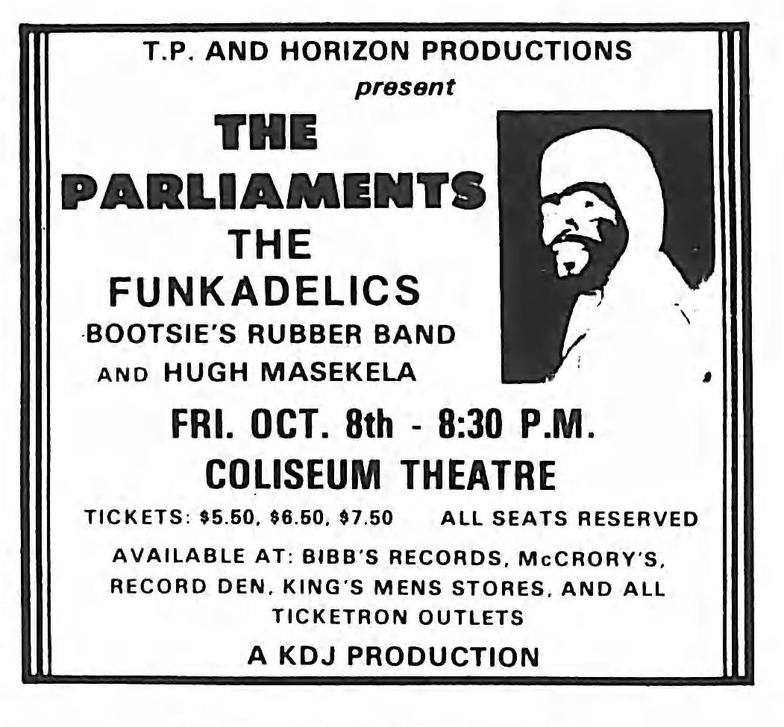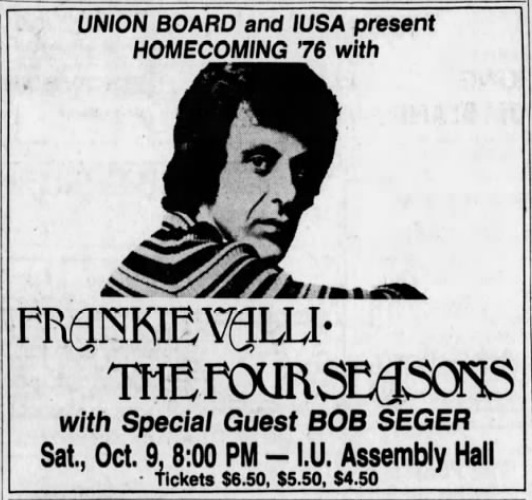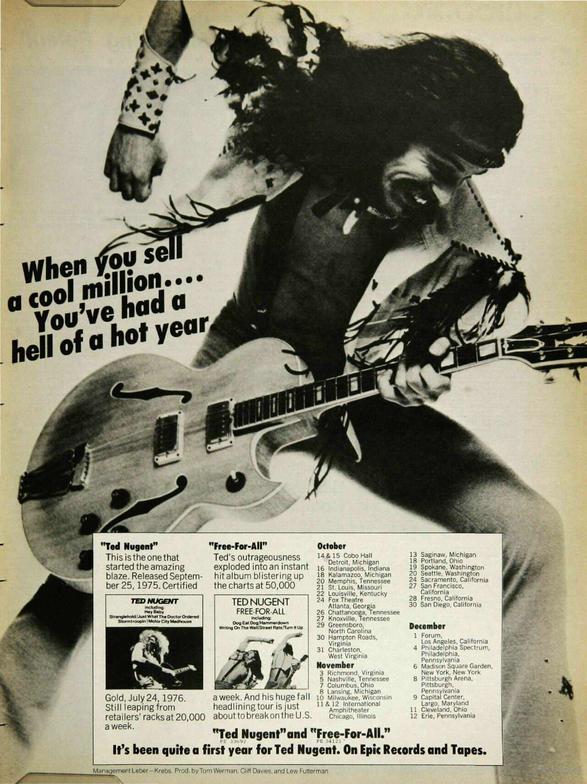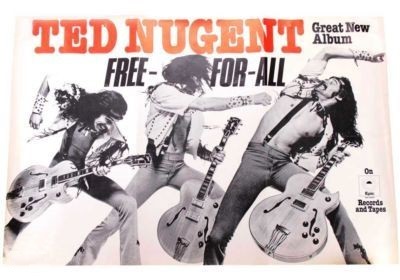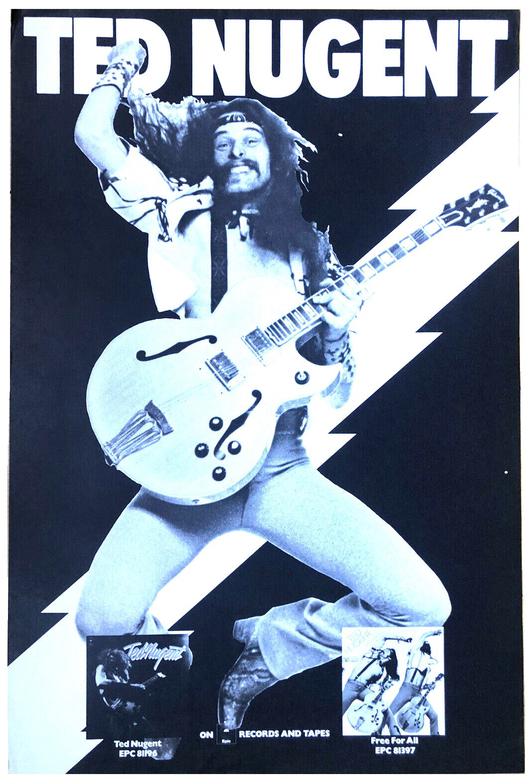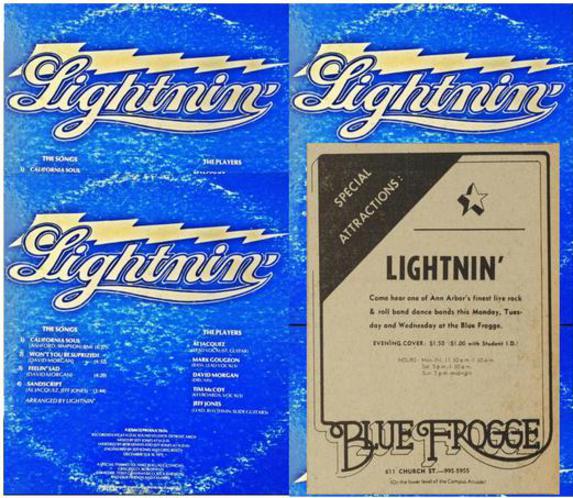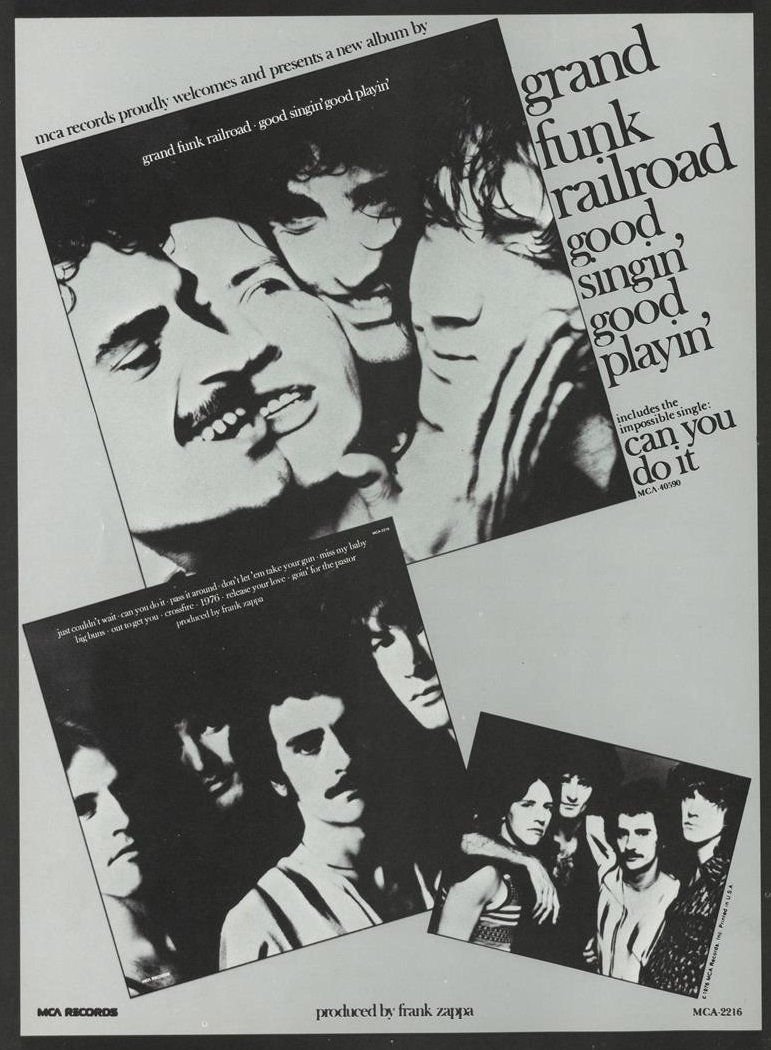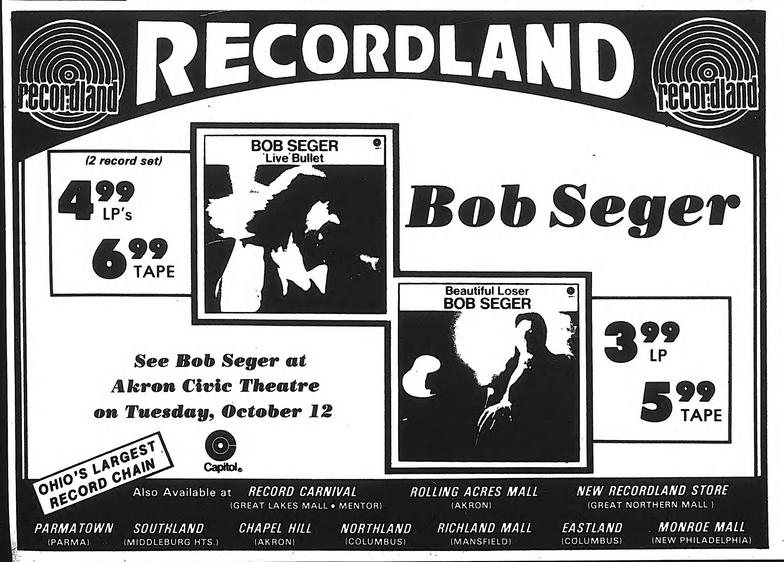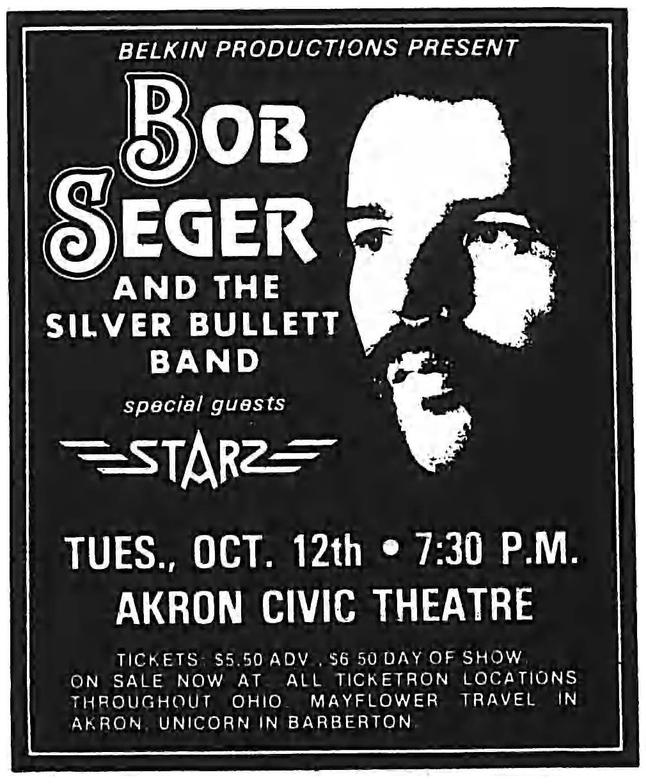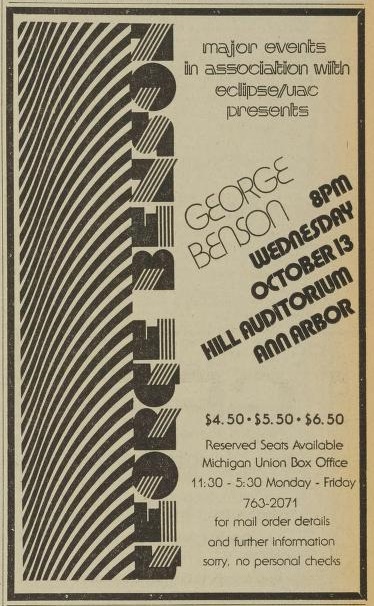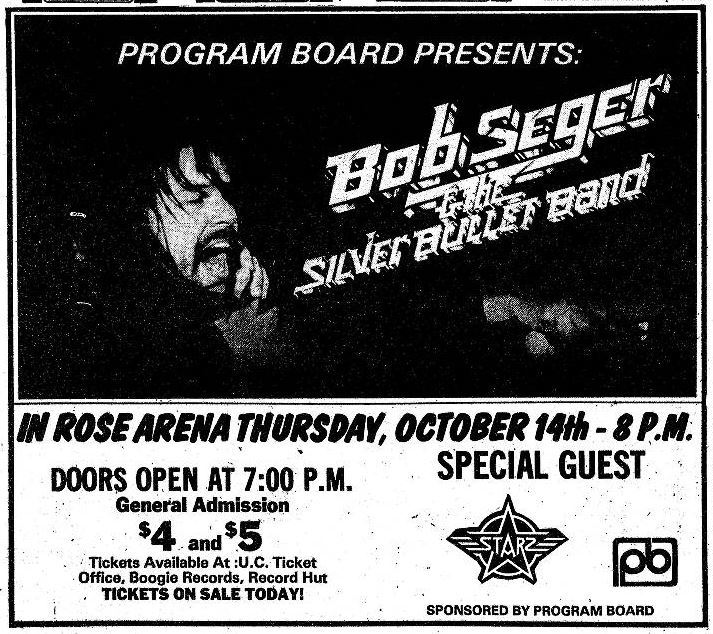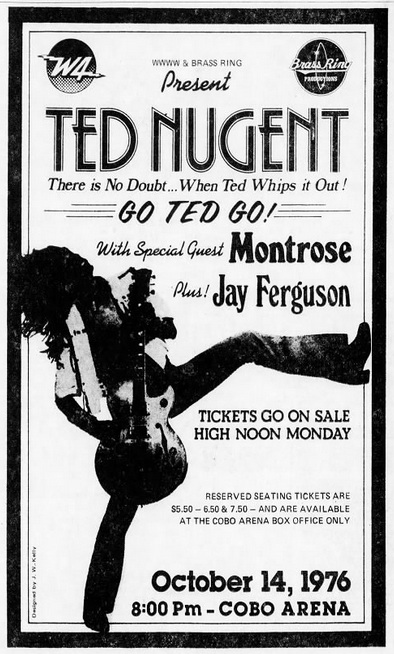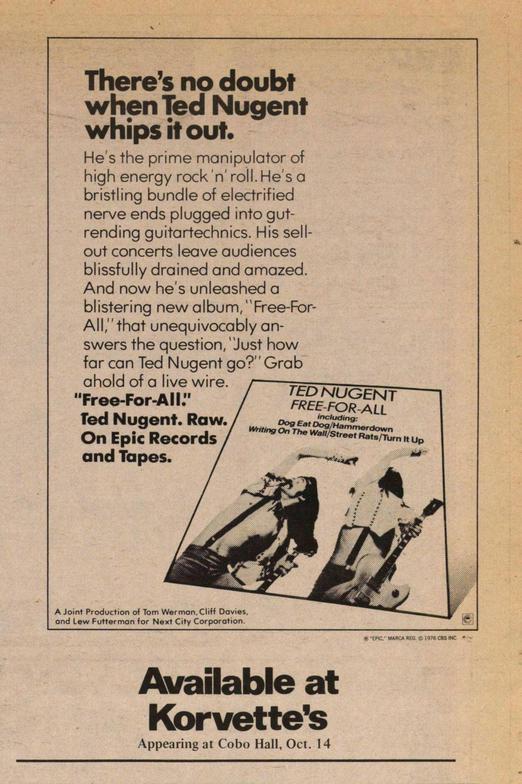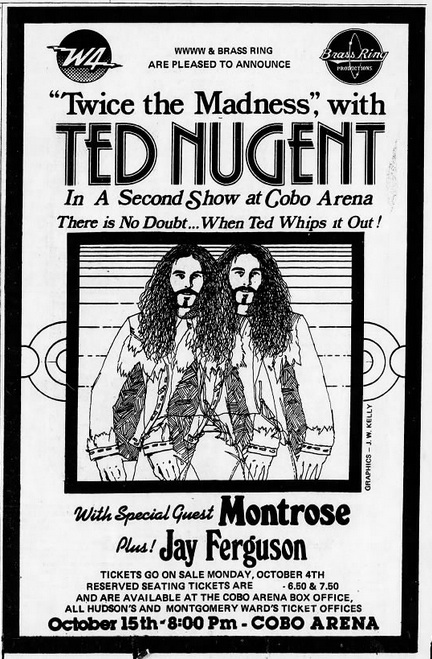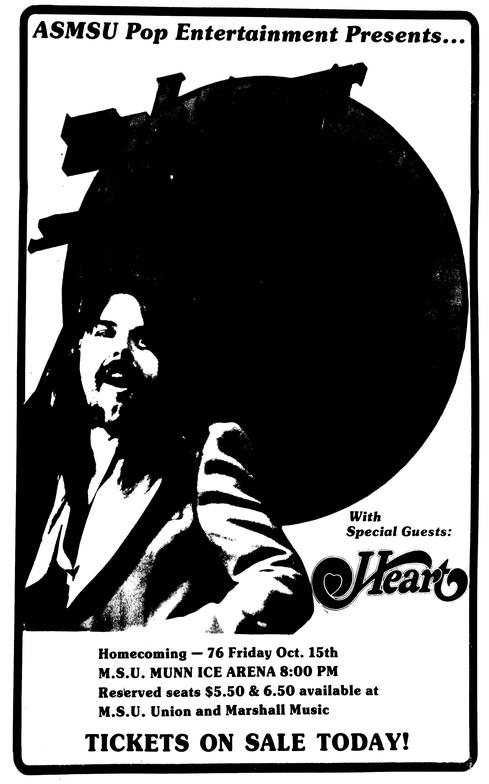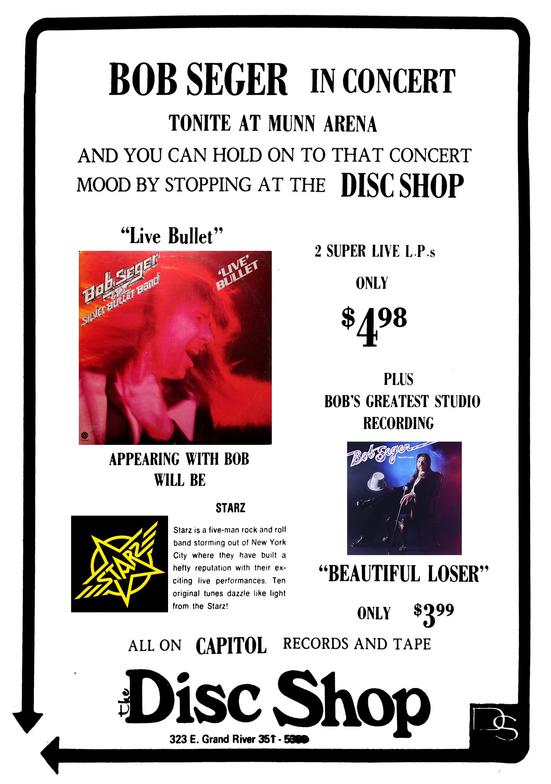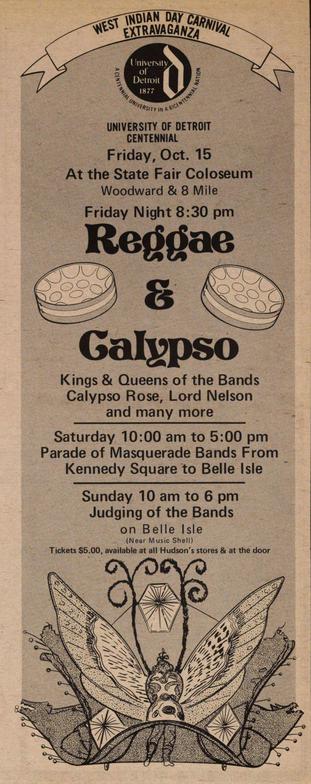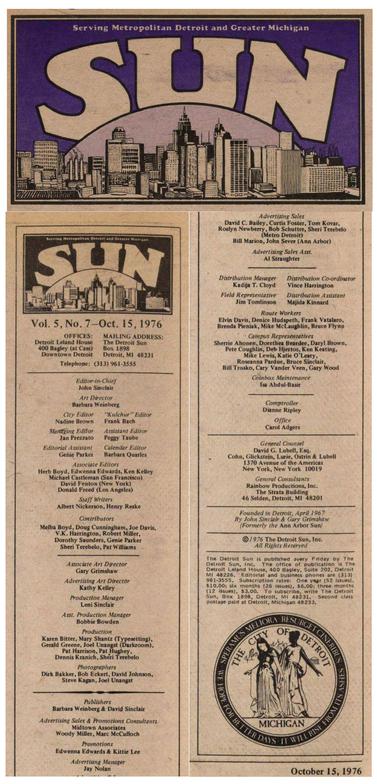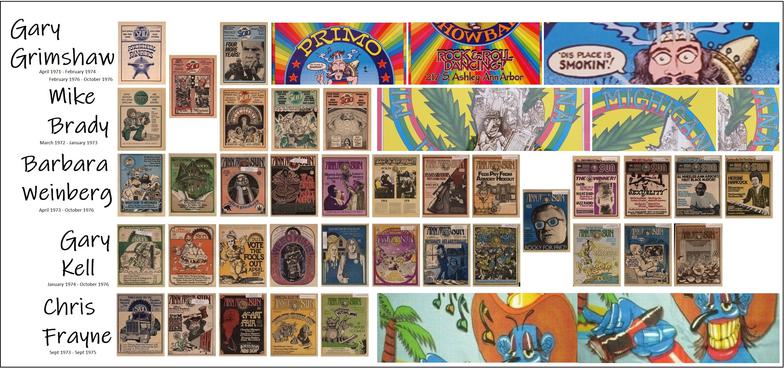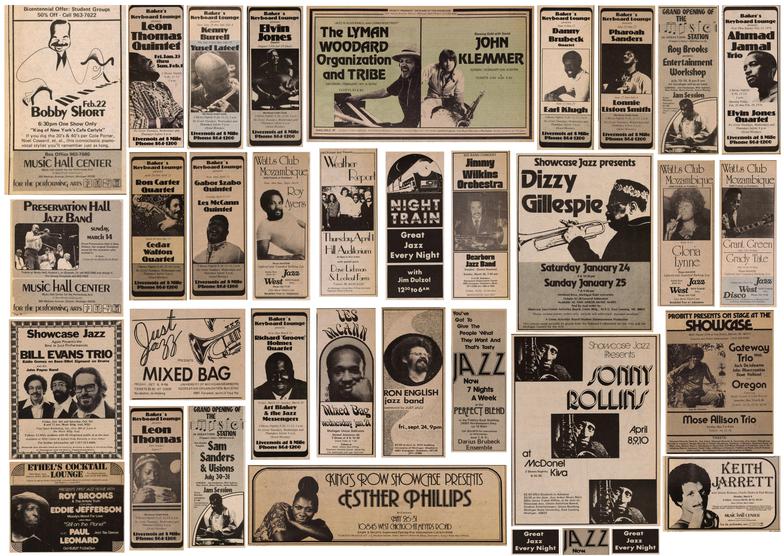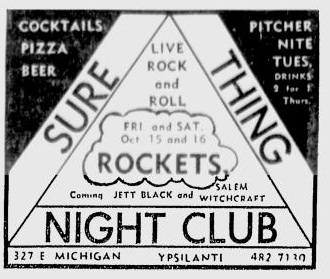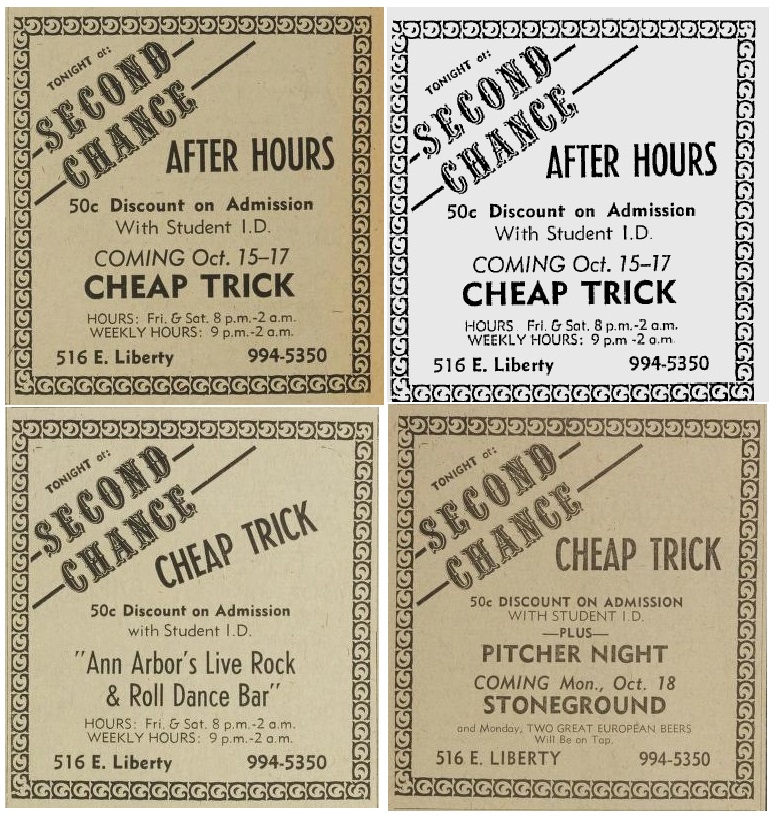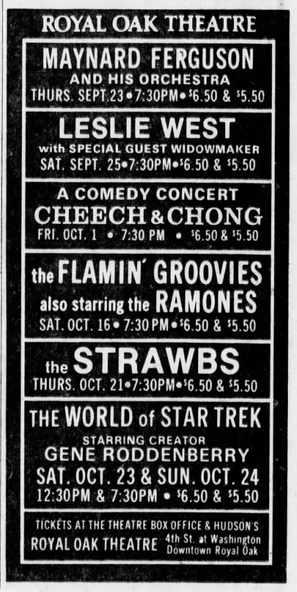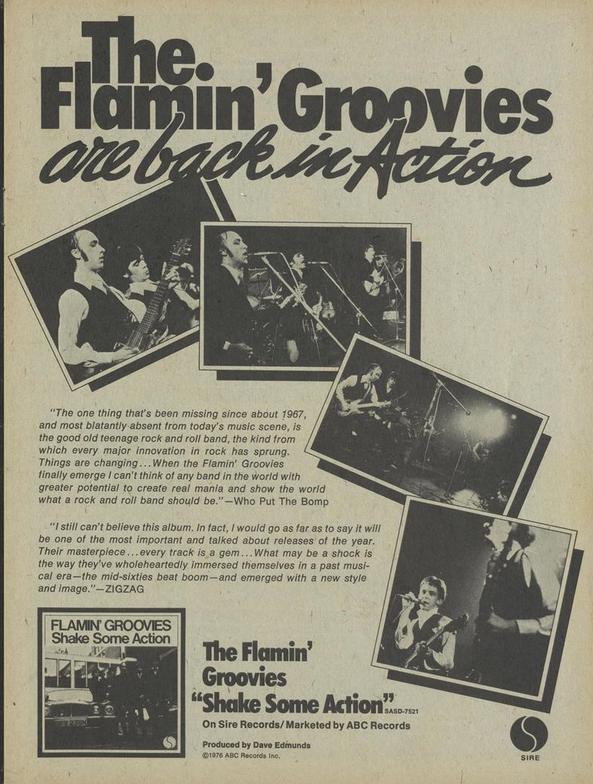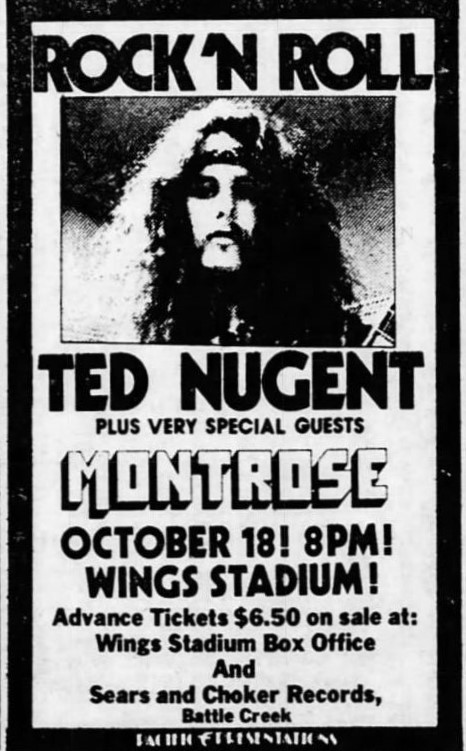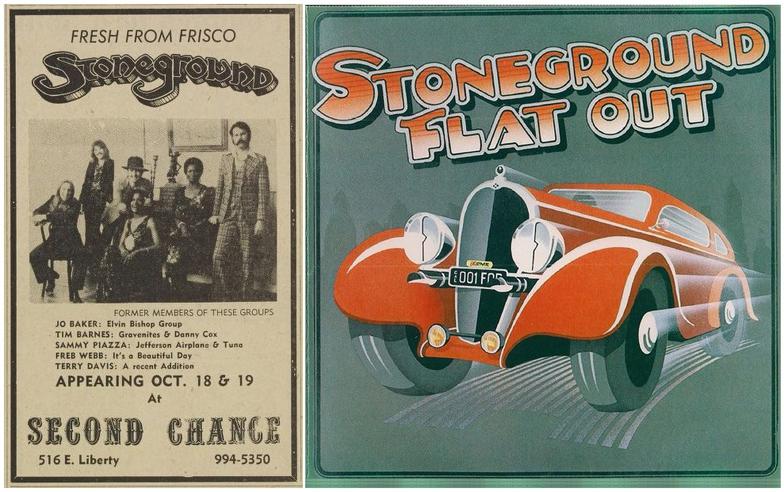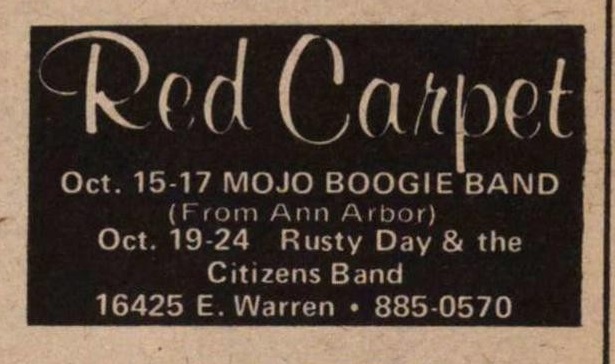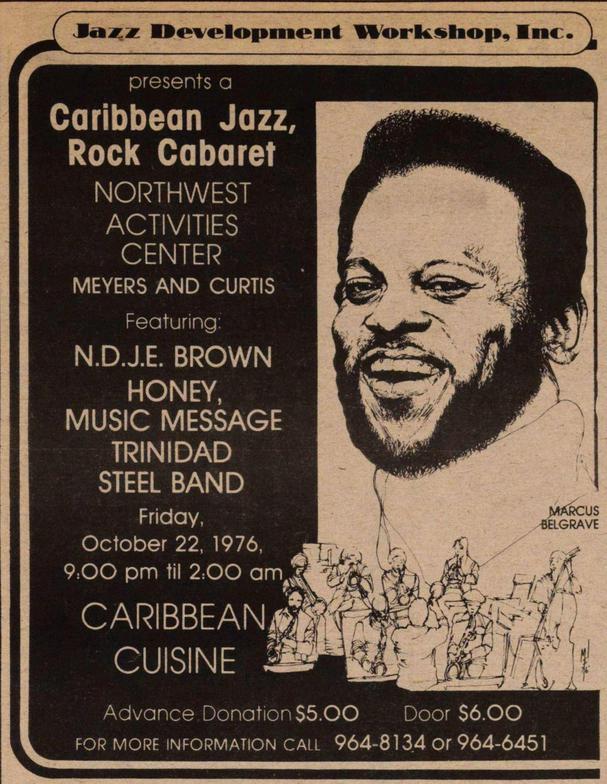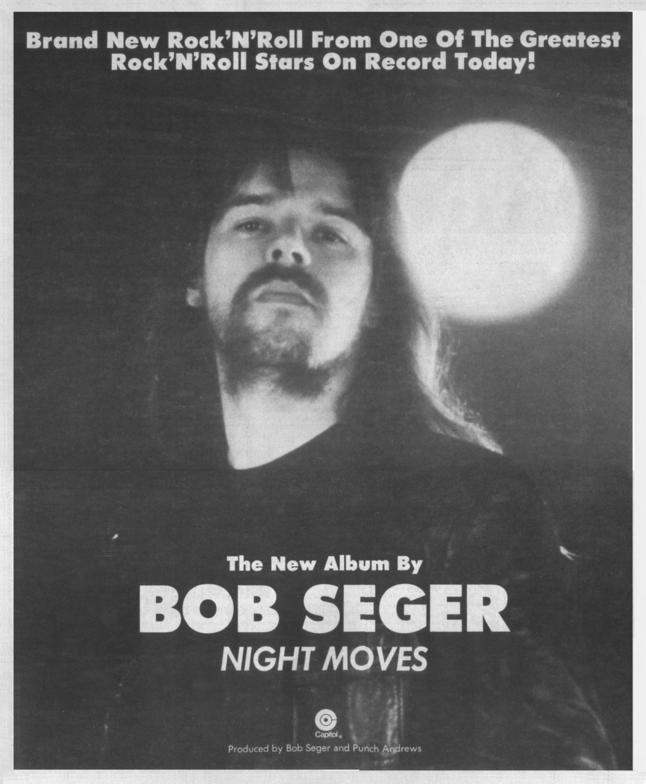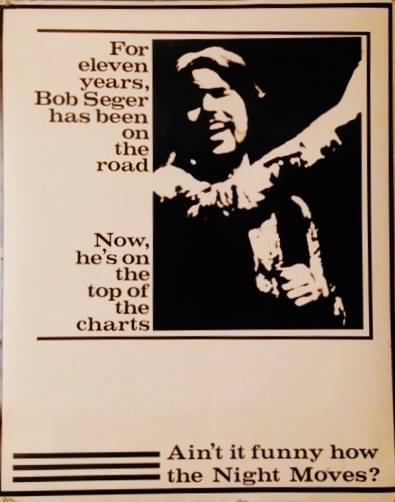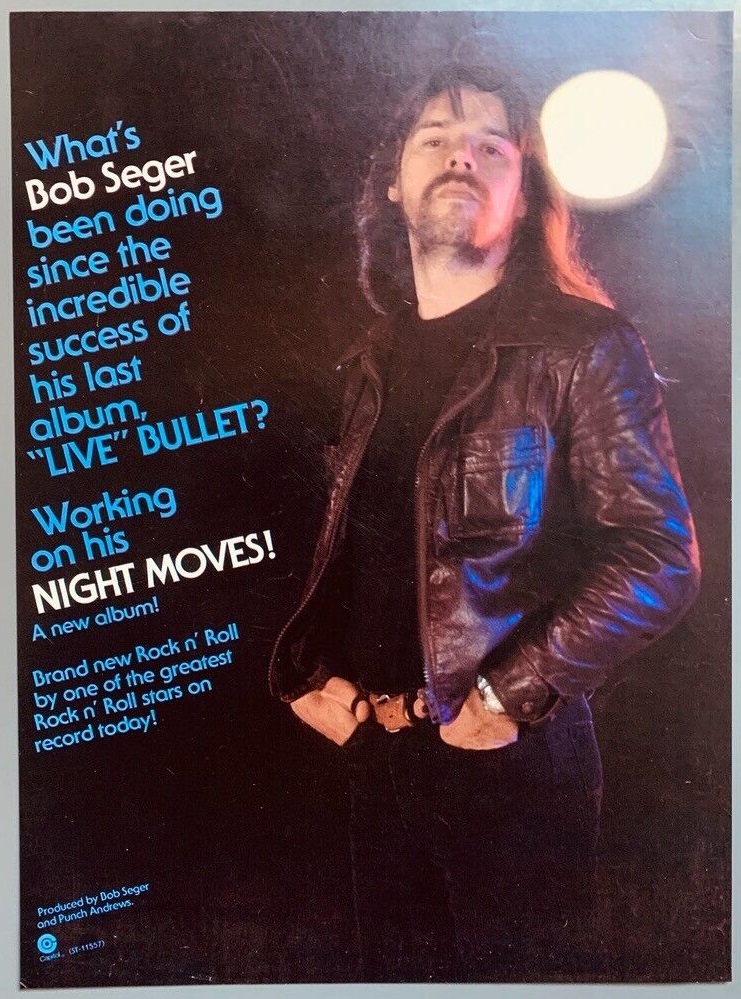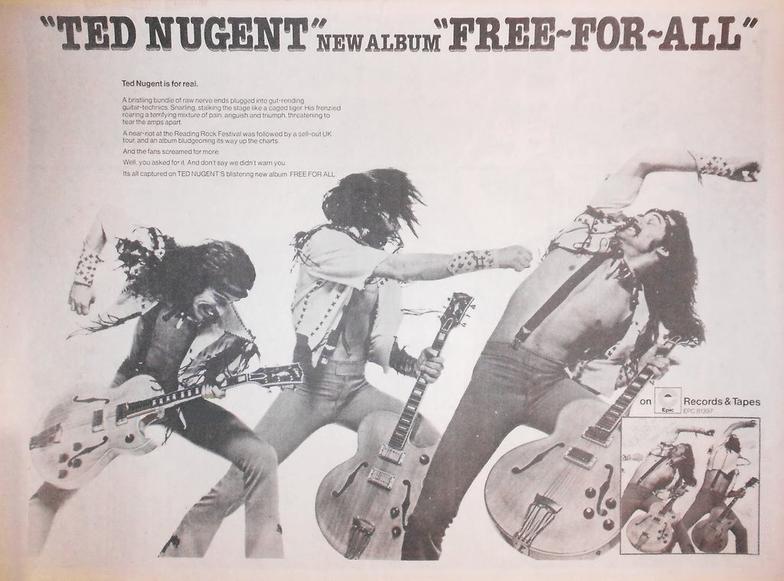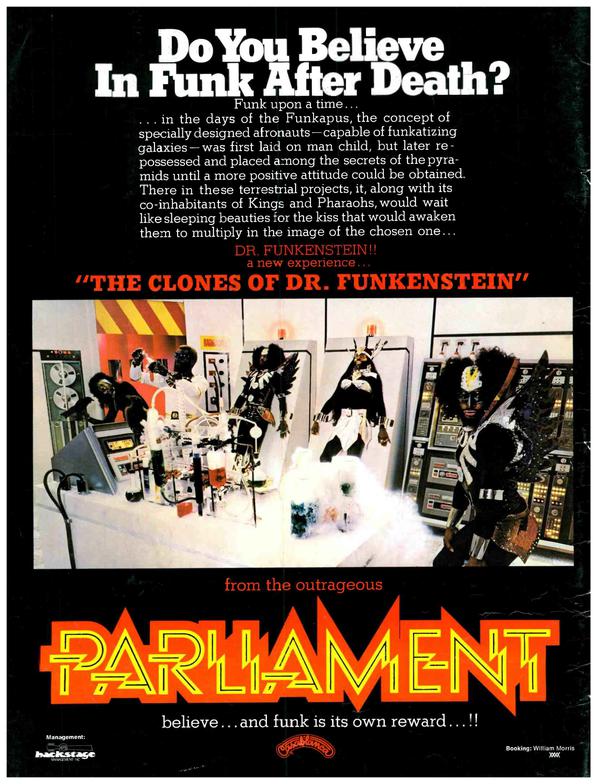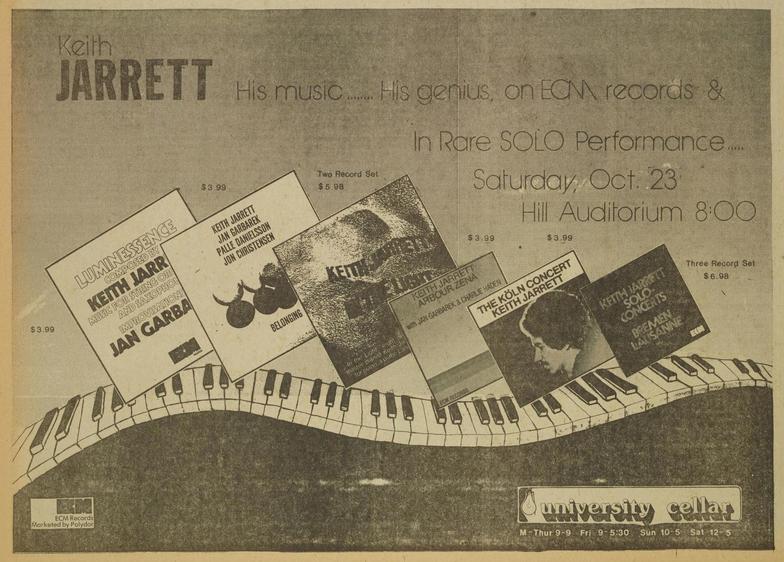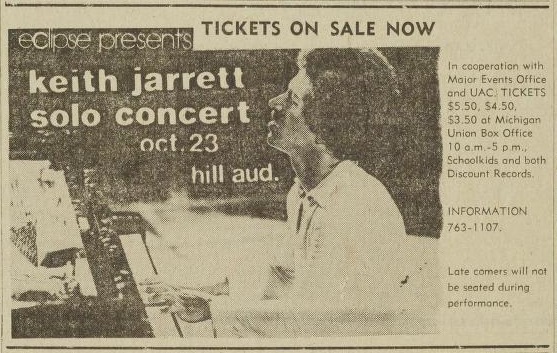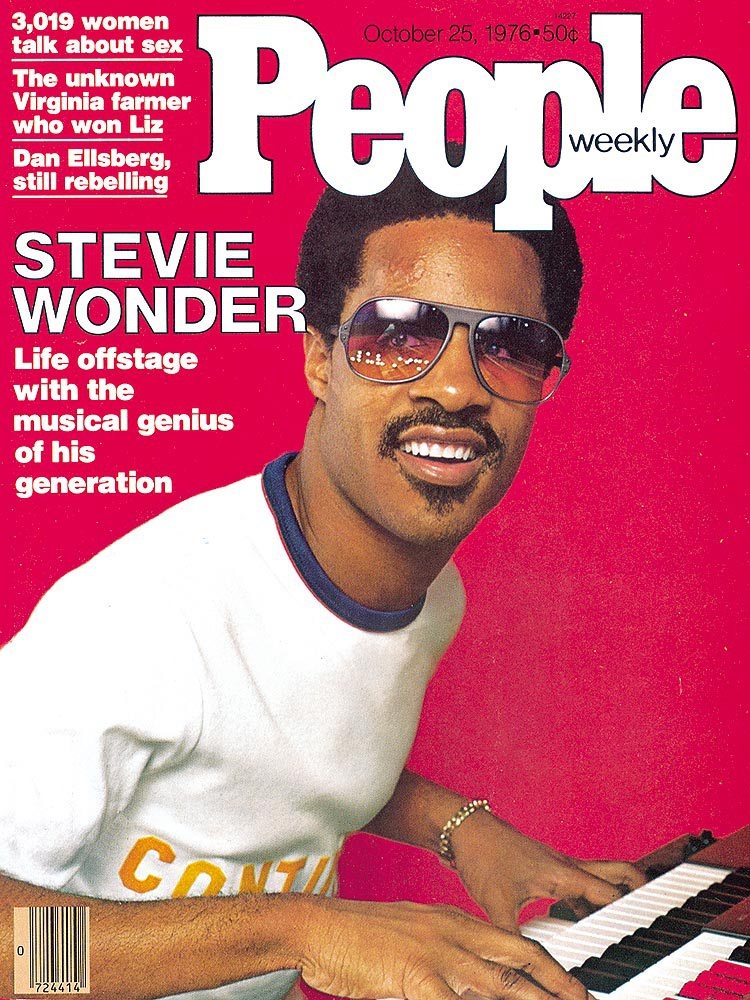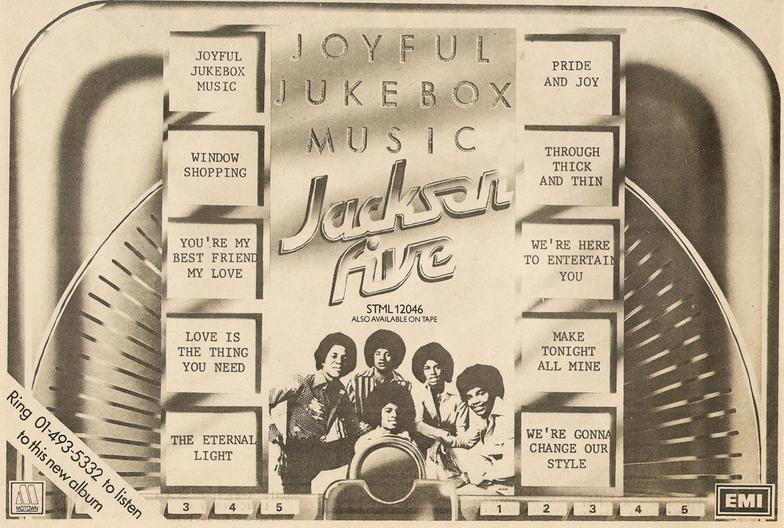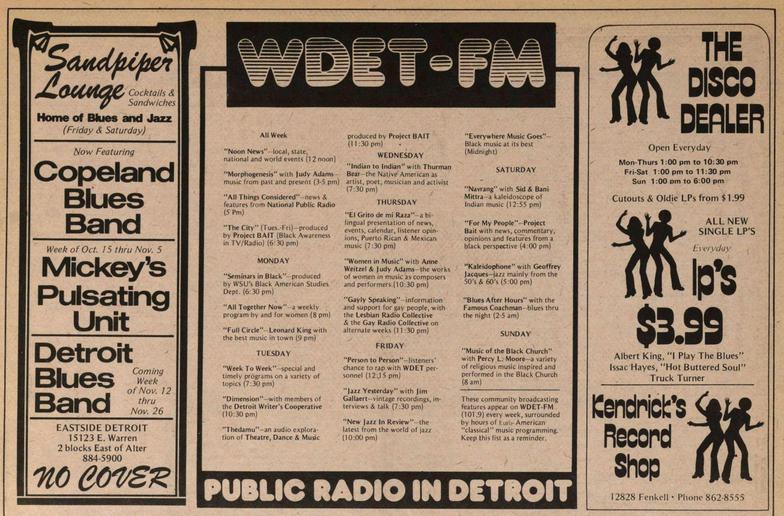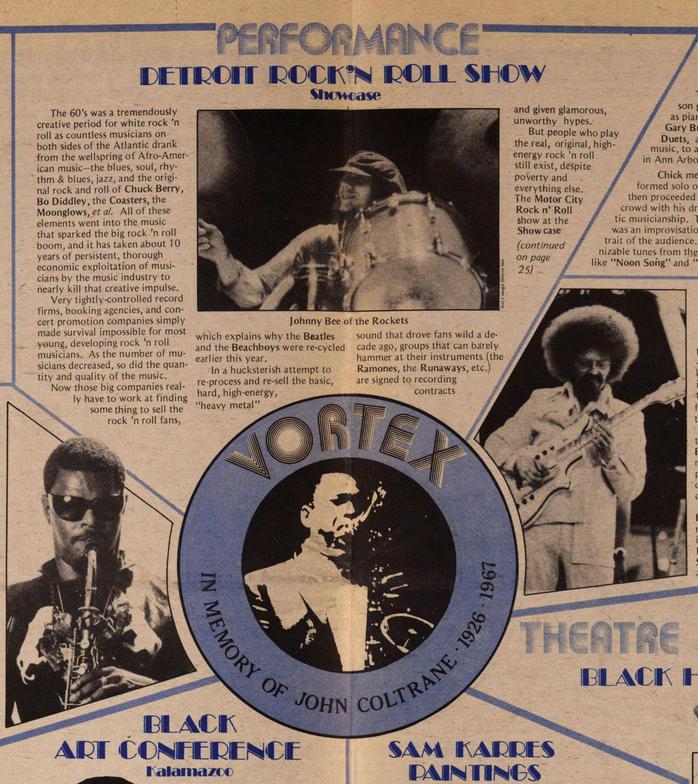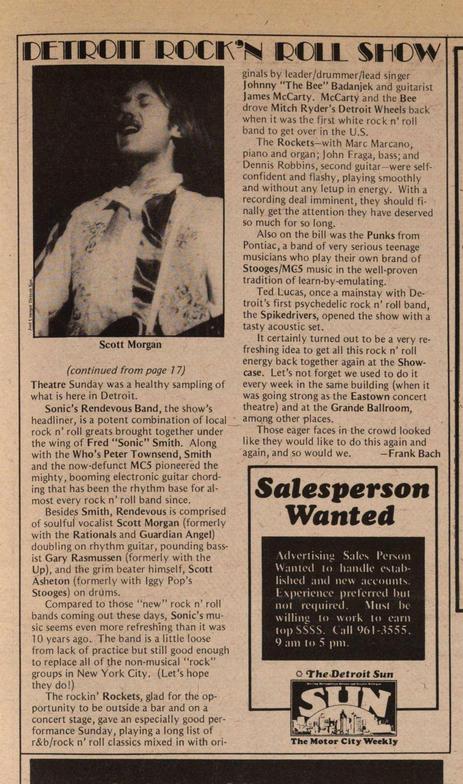Splatt Gallery
Double click here to add text.
Splatt Gallery's History of Michigan Music Posters
Volume Twelve - 1976 - Page Eleven
************************************************************
Bob Seger was featured in the October 1976 issue of CREEM, as the magazine’s “Star’s Cars #20”, with his non-Detroit-made Triumph TR-7. Note the bicentennial Michigan license plate.
A full-page ad for NORML in the October 1, 1976 issue of the SUN newspaper in Detroit, Michigan. The eight states that had decriminalized marijuana by then were Oregon, Alaska, Maine, Colorado, California, Ohio, South Dakota and Minnesota.
Yet another benefit party for the Fifth Estate newspaper in Detroit, Michigan on October 1, 1976.
A newspaper ad for the Harvest Festival in Canaan, New Hampshire on October 2, 1976, with Bob Seger & the Silver Bullet Band crossing paths with Detroit native James Montgomery.
An ad for the band Oregon, from the decriminalized state of Oregon at Michigan State University in East Lansing , October 2-3, 1976.
The “Steal Your Face” logo for the Grateful Dead, designed by Stanley Owsley and Bob Thomas, used on this poster/ad for the Grateful Dead’s first Michigan show in four years, their 14th Michigan appearance, at Cobo Arena in Detroit on October 3, 1976.
Here is an audio recording of their performance that night:
Grateful Dead – Live in Detroit, Michigan (10/3/76)
https://www.youtube.com/watch?v=v_Qrq3jALgE&list=PLg3y_SrY5s15SYH8jzaTfZXJPt6nZPJyx
Cover art for the 2-CD set of the Grateful Dead’s show at Cobo Arena in Detroit, Michigan on October 3, 1976, which was part of the massive 80-CD box set called “30 Trips Around the Sun”. This was the final show of their 1976 tour and has many highlights that have made it a favorite among Grateful Dead fans and collectors.
Details, set lists and photos from the show can be found here:
http://www.gratefulseconds.com/2018/01/detroit-rock-city-cobo-hall-october-3.html
And the complete concert can be heard here:
Grateful Dead – Live in Detroit (10/3/76)
https://archive.org/details/gd76-10-03.aud.weiner.19415.sbeok.shnf
Poster/flyer by an unknown artist for Bob Seger & the Silver Bullet Band with Angel at the Grand Valley State Colleges Dome in Allendale, Michigan on October 3, 1976. A Paul Stanley Production. The photo of Seger comes from the back cover of the “Beautiful Loser” album.
The Tommy Bolin Band performed its one and only Michigan show at Ford Auditorium in Detroit on October 5, 1976. Bolin had performed numerous times in the state as a member of the bands Zephyr, James Gang, and most recently Deep Purple the past February on that band’s final tour.
With Deep Purple disbanded, Bolin, who had two solo albums to his credit, was finally able to form his own band. Detroit fans were delighted that saxophonist Norma Bell was a part of the new group.
Tragically, Bolin died from a drug overdose just two months after the Detroit show, and just hours after his last show, opening for Jeff Beck in Miami, Florida on December 4th, at the age of only 25 years. The following track is one of his most familiar, it was the final song that he played on stage, for the encore of his last show, and, of course, it features Norma Jean Bell.
Tommy Bolin – Post Toastee (1976)
https://www.youtube.com/watch?v=A7FOTBdbPN8
A pair of ads by an unknown artist for Baker’s Keyboard Lounge in Detroit, Michigan with the distinctive keyboard borders, with the Grant Green Quintet, October 5-10, 1976, and with the Yusef Lateef Quartet, October 14-24.
An ad in the October 6, 1976 edition of the student newspaper at Oakland University announcing that the Harper Theatre, an elaborate movie theater on Harper Avenue in Detroit, Michigan, had been refashioned into a disco nightclub called Harpo’s. It will continue as such for a little over three years, when it will be transformed again into Detroit’s premier Heavy Metal venue.
An ad for Mixed Bag in Dearborn, Michigan on October 6, 1976.
A full-page Motown Records ad, dedicated to Stevie Wonder, in the October 8, 1976 issue of the SUN newspaper in Detroit, Michigan.
A beautiful logo for WJZZ-FM radio in Detroit, Michigan, designed by an artist named Dempster, first seen in print in the October 8, 1976 issue of the SUN newspaper.
An ad for Ethel’s Cocktail Lounge in Detroit, Michigan with the Fantastic Four starting an engagement on October 8, 1976.
An ad for the Parliaments, the Funkadelics, Bootsy’s Rubber Band, and Hugh Masekela in Cleveland, Ohio on October 8, 1976.
After opening for KISS more than twenty times over the previous three months, Bob Seger & the Silver Bullet Band were booked for their oddest gig of the year, opening for Frankie Valli & the Four Seasons in Champaign, Illinois on October 9, 1976.
A full-page Epic Records ad in the October 9, 1976 issue of Billboard magazine for the second solo album by Ted Nugent. Michigan tour dates include a two-show kick-off at Cobo Arena in Detroit, October 14th and 15th, a show in Kalamazoo on October 18th, in Lansing on November 8th, and in Saginaw on November 13th.
During the course of recording the album “Free For All”, lead vocalist Derek St. Holmes quit the band in a dispute with Nugent, so Meat Loaf was brought into the sessions and sang lead on five on the album’s nine tracks. St. Holmes returned to the group shortly after the album’s release, and performed on the subsequent tour.
Promo poster for the second solo album by Ted Nugent, “Free For All” released in October 1976.
A poster printed in the UK for the second solo album by Ted Nugent, “Free For All” released in October 1976.
A newspaper ad for Black Oak Arkansas at Cobo Arena in Detroit, Michigan on October 10, 1976.
A newspaper ad for Lightnin’ at the Blue Frogge in Ann Arbor, Michigan, October 11-13, 1976. The band’s recorded legacy consists of one single in 1973, when Scott Morgan was in the group, and this four-song private press EP, released either in late 1975 or early 1976. We were able to track it down, so we’ll put it here:
Lightnin' – Lightnin’ (EP) (1975)
https://www.youtube.com/watch?v=m_vXWhnZ4lI
A full-page ad in the October 12, 1976 issue of Circus magazine and in the October 1976 issue of CREEM magazine for the Grand Funk Railroad album “Good Singin’ Good Playin’”, produced by Frank Zappa.
Ads for Bob Seger & the Silver Bullet Band in Akron, Ohio with Starz on October 12, 1976.
An interestingly designed small ad by an unknown artist for George Benson at Hill Auditorium in Ann Arbor on October 13, 1976.
Newspaper for Bob Seger & the Silver Bullet Band at the Rose Arena in Mt. Pleasant, Michigan on October 14, 1976.
Two posters/ads by J.W. Kelly for Ted Nugent at Cobo Arena in Detroit, Michigan on October 14, 1976.
An ad from the Korvette's department store for Ted Nugent’s “Free For All” album with a tie-in to his show at Cobo Arena on October 14, 1976.
A schedule of events at the Sandpiper Lounge in Detroit, Michigan, with Mickey’s Pulsating Unit beginning on October 15, 1976.
A poor-quality ad image, but you get the general idea, for Bob Seger & the Silver Bullet Band with Heart at Michigan State University in East Lansing, Michigan on October 15, 1976.
A record store ad with a tie-in to Bob Seger & the Silver Bullet Band with Heart at Michigan State University on October 15, 1976.
An ad for West Indian Day Carnival Extravaganza at the University of Detroit on October 15, 1976.
Suddenly and inexplicitly, the SUN newspaper in Detroit, Michigan disappeared, the October 15, 1976 issue proved to be its last. The Fifth Estate newspaper, which had become bitterly rival when the SUN moved from Ann Arbor to Detroit, gleefully reported the demise, due to a financial collapse, as “Good riddance to bad rubbish”. By that time, the Fifth Estate had become so vehemently anti-capitalist that they refused paid advertising, so with the loss of the SUN there was no more concert or club news for the city of Detroit, other than the two mainstream newspapers, The Detroit News and The Detroit Free Press, neither of which had the dedication the SUN had for cultural events.
In addition. John Sinclair’s “Coatpuller” column kept extremely good track on the local rock bands such as the Rockets and others, with up to date news that was now ended.
The SUN staff, which at the time of the final issue included among our central characters John Sinclair, Barbara Weinberg, Leni Sinclair, Gary Grimshaw, Frank Bach, Peggy Taube, Ken Kelley and David Sinclair, scattered to the wind.
When the SUN newspaper in Detroit, Michigan came to an abrupt halt with the October 15, 1976 issue, it ended a five and a half year run of not only the best local music coverage, but also one of the finest periods of graphic illustration to be found in print.
When the SUN newspaper had a rejuvenated return as the Ann Arbor SUN in April 1971, Gary Grimshaw was the principle artist, as the core group from the Trans-Love, John, Leni, and David Sinclair, Genie and Pun Plamondon, Frank Bach and Peggy Taube, and photographer David Fenton basically stayed intact.
Their success this time, that is a regular publication, was probably attributable to the paper’s great staff, too many to list here. Perhaps, the oddest thing is that over the three years that Grimshaw was with the paper, there was only a single issue that had his art on the front cover, a June 1971 issue with his logo for the Psychedelic Rangers.
The first fifty, or so, issues used photographs for the front covers, which is practically a family diary of the Rainbow People’s Party, which formed near the same time as the paper’s launch, not to deny that the pictures were nearly always excellent, coming from the lenses of David Fenton and Leni Sinclair.
The next major illustrator to join the paper was Mike Brady, in March 1972, about one year into publication. Barbara Weinberg joined another year later, in April 1973, and her multiple talents led her to become the paper’s Art Director, a position she maintained until the final issue. Weinberg, by far, had the most front covers, far too many to have included in the above graphic.
When Grimshaw left, in February 1974, his position was aptly taken by Gary Kell, who probably has the largest amount of art in the paper as he also lasted until the final issue. About six months before Grimshaw left and Kell took over, Chris Frayne joined the staff, bringing his unmistakable Ozone art to about a half-dozen covers (and plenty of inside pages).
Gary Grimshaw, by the way, re-joined the paper in February 1976, for the final ten months of the paper’s existence, but by then the Ann Arbor SUN had reverted back to the SUN with a move back to Detroit in the summer of 1975, and the front covers adopted a news tabloid-style layout without the single large panel that had served so well for the often stunning art to grab your attention.
Also, keep in mind that we are only talking about the front covers here, all of these artists displayed extensive work throughout the paper’s pages. And in addition, other fine artists worked at the paper but never had a front cover, such as Greg Sobran and Larry Behnke.
It might seem there was a jazz renascence in Detroit, Michigan in 1976 with clubs such as Baker’s Keyboard Lounge, Watts Club Mozambique, the Music Station, King’s Row Showcase, and Ethel’s Cocktail Lounge playing host to the likes of Dizzy Gillespie, Sonny Rollins, Bill Evans, Mose Allison, Pharoah Sanders, Ahmad Jamal, Roy Ayers, Les McCann, Ron Carter, Earl Klugh, Yusef Lateef, Keith Jarrett, Leon Thomas, Elvin Jones, Sam Sanders, Esther Phillips, Art Blakey, Ron English, Lyman Woodard, Lonnie Liston Smith, Preservation Hall Jazz Band, Weather Report, and many more, but it was probably no different than any other year in Detroit’s rich jazz heritage, except that super-fans John Sinclair and Frank Bach were loading the pages of the “Kulchur” section of the SUN newspaper with ads for these shows.
An ad for the Sure Thing Night Club in Ypsilanti, Michigan with the Rockets appearing October 15-16, 1976.
Cheap Trick returned to the Second Chance in Ann Arbor, Michigan for three more shows, October 15-17, 1976, bringing their total to eleven shows for the year at the Ann Arbor club.
A list of events at the Royal Oak Theatre in Royal Oak, Michigan with the first Michigan appearance by the Ramones, opening for the Flamin’ Groovies on October 16, 1976.
A full-page Sire Records ad in the October 1976 issue of CREEM magazine for the Flamin’ Groovies’ album “Shake Some Action” at the time of the group’s appearance at the Royal Oak Theatre, with the Ramones, on October 16, 1976.
An ad for Earth, Wind & Fire at Bowen Field House in Ypsilanti, Michigan on October 17, 1976.
Poster/ad for Ted Nugent with Montrose at Wings Stadium in Kalamazoo, Michigan on October 18, 1976.
An ad for the band Stoneground, appearing at Second Chance in Ann Arbor, Michigan, October 18-19, 1976. These may have been the only Michigan shows by the California band, whom you may recall was the traveling “house band” for the 1971 movie “Medicine Ball Caravan”.
The band broke up in 1973 when they were dropped by Warner Bros, Records after releasing three albums, three of the members left to form the pop group Pablo Cruise. The only remaining original member, Tim Barnes, continued to lead various rosters of Stoneground for another ten years, self-releasing the 1976 album “Flat Out” with album cover artwork by poster artist Randy Tuten.
An ad for the Red Carpet Lounge in Detroit, Michigan featuring Rusty Day & the Citizen’s Band, October 19-24, 1976.
Illustration of Marcus Belgrave by an unknown artist on this add for the Jazz Development Workshop in Detroit, Michigan with a Caribbean Jazz Rock Cabaret on October 22, 1976.
Ads for the ninth studio album by Bob Seger “Night Moves” which was released on October 22, 1976.
A full-page Capitol Records ad for the ninth studio album by Bob Seger which was released on October 22, 1976. It was the first studio album credited to the Silver Bullet Band although half of the tracks were of Seger working once again with Muscle Shoals Rhythm Section.
The first single from the album, the title track, became Seger’s first Top Ten single, peaking at #4 on the Billboard Hot 100 chart.
Filmmaker Gary Weis produced an unofficial music video for "Night Moves" that aired on Saturday Night Live in January 1977, featuring SNL cast Member Garrett Morris.
Bob Seger – Night Moves (1976)
https://www.youtube.com/watch?v=Mg2FOymTJnE
An ad in the British music magazine Melody Maker for the second solo album by Ted Nugent.
A full-page Casablanca Records ad for “The Clones of Dr. Funkenstein” on the back cover of the October 16, 1976 issue of Billboard magazine.
A nice record store ad to go with an appearance by Keith Jarrett at Hill Auditorium in Ann Arbor, Michigan on October 23, 1976.
Stevie Wonder on the cover of the October 25, 1976 issue of People magazine.
An ad for the album “Joyful Jukebox Music” by the Jackson Five, their third compilation album and their final release (excepting later compilations) on Motown Records on October 26, 1976. Comprised of previously unreleased material, recorded between 1972 and 1975, the album was released less than two weeks before the group's debut on their new label Epic Records.
Volume Twelve - 1976 - continues - HERE
Program schedule for WDET-FM public radio in Detroit, Michigan in the October 1, 1976 issue of the SUN newspaper, including the “Morphogenesis” show by former CREEM staffer Judy Adams, and “Blues After Hours” by the Famous Coachman.
A review of the Motor City Rock n’ Roll show at the Showcase Theater by Frank Bach in the October 1, 1976 issue of the SUN newspaper.


